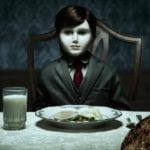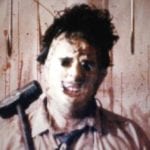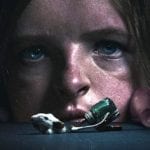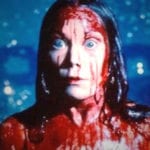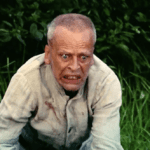 Technology
Technology  Technology
Technology  Humans
Humans 10 Everyday Human Behaviors That Are Actually Survival Instincts
 Animals
Animals 10 Animals That Humiliated and Harmed Historical Leaders
 History
History 10 Most Influential Protests in Modern History
 Creepy
Creepy 10 More Representations of Death from Myth, Legend, and Folktale
 Technology
Technology 10 Scientific Breakthroughs of 2025 That’ll Change Everything
 Our World
Our World 10 Ways Icelandic Culture Makes Other Countries Look Boring
 Misconceptions
Misconceptions 10 Common Misconceptions About the Victorian Era
 Mysteries
Mysteries 10 Strange Unexplained Mysteries of 2025
 Miscellaneous
Miscellaneous 10 of History’s Most Bell-Ringing Finishing Moves
 Technology
Technology Top 10 Everyday Tech Buzzwords That Hide a Darker Past
 Humans
Humans 10 Everyday Human Behaviors That Are Actually Survival Instincts
 Animals
Animals 10 Animals That Humiliated and Harmed Historical Leaders
Who's Behind Listverse?

Jamie Frater
Head Editor
Jamie founded Listverse due to an insatiable desire to share fascinating, obscure, and bizarre facts. He has been a guest speaker on numerous national radio and television stations and is a five time published author.
More About Us History
History 10 Most Influential Protests in Modern History
 Creepy
Creepy 10 More Representations of Death from Myth, Legend, and Folktale
 Technology
Technology 10 Scientific Breakthroughs of 2025 That’ll Change Everything
 Our World
Our World 10 Ways Icelandic Culture Makes Other Countries Look Boring
 Misconceptions
Misconceptions 10 Common Misconceptions About the Victorian Era
 Mysteries
Mysteries 10 Strange Unexplained Mysteries of 2025
 Miscellaneous
Miscellaneous 10 of History’s Most Bell-Ringing Finishing Moves
10 Of The Oldest Surviving Silent Horror Movies
The term “horror” wasn’t coined until the 1930s, but elements of the genre can be traced all the way back to silent trick films of the 1800s. Trick films used experimental techniques to show special effects, and they often touched on supernatural topics such as ghosts, witches, and vampires.
Many of these early experiments with horror have since disappeared, either from damage or being lost throughout the years. However, some of the most influential silent horror films are still available to watch today.
10 Le Manoir du Diable
The name Georges Melies is synonymous with silent films. Known to many for his 1902 film A Trip to the Moon (Le Voyage dans la Lune), Melies was an early experimenter with camera techniques, special effects, and many horror motifs that are still widely used today.
Melies began his film career in 1896. That year, he made Le Manoir du Diable (“The House of the Devil”), released in the United States as The Haunted Castle.
With a running time of around three minutes, the film opens with a bat flying around a castle and then transforming into the demon Mephistopheles. A cauldron appears, and he produces a beautiful woman from it. Suddenly, two cavaliers interrupt him. He tries to scare them off by producing a skeleton, ghosts, and numerous old witches, but he is ultimately driven away by one of the cavaliers approaching him with a crucifix.
Despite its comedic elements, Le Manoir du diable is widely considered to be the first horror film and possibly even the first appearance of a vampire. For decades, the film was presumed to be lost until 1988 when a lucky shopper found it collecting dust in a Christchurch, New Zealand, junk shop.[1]
Georges Melies went on to create several other silent fantasy and trick films that contained early elements of horror. These included Une Nuit Terrible, where a man’s sleep is interrupted by a giant bug climbing up his wall, and The Astronomer’s Dream, where a giant Moon eats an astronomer’s telescope and numerous people climb in and out of its mouth.
9 Bluebeard
In 1901, Georges Melies continued his exploration into horror with Bluebeard, perhaps the first movie about a serial killer. The film is based on the French fairy tale “Bluebeard” written by Charles Perrault, the same man who wrote “Cinderella,” “Sleeping Beauty,” and “Little Red Riding Hood.”[2]
In about nine minutes, the film tells the story of a creepy old man looking for a new wife. His previous seven wives have all disappeared without explanation. A father allows his daughter to marry the old man, and she moves into his castle. She is told she can explore any room in the castle except one.
Naturally, the first thing she does when she’s alone is sneak into that room. She opens the door, feels her way through the darkness, peels back the curtains to let in some light, and turns around to see seven dead bodies hanging from hooks and dripping with blood.
The film is an excellent example of technical skill and the ability to craft a narrative that translates well on-screen.
8 The Haunted Curiosity Shop
In 1901, British director W.R. Booth directed The Haunted Curiosity Shop. The film involves an old curio dealer who finds that the objects in his shop suddenly have a life of their own.
He is confronted by a floating head, a skeleton, a ghost, and a disembodied woman who reconnects the two separate pieces of her body. Like other silent films in this early era, The Haunted Curiosity Shop contains many horror elements without directly intending to frighten the audience.
Before entering the film industry, Booth had previously worked as a magician, and he used The Haunted Curiosity Shop to display all his best tricks and techniques. In 1906, he started his own studio in an outdoor garden. There, he produced the first British animated film, The Hand of the Artist.[3]
7 The Infernal Cauldron
In 1903, Georges Melies returned to the familiar theme of horror with the film The Infernal Cauldron (Le Chaudron Infernal).
The film shows a green demon throwing three people into a cauldron. Each time a person is thrown in, a giant streak of fire erupts. Shortly after, the three people emerge as ghosts. They turn into balls of fire and chase the demon around until he jumps into the cauldron himself.
Le Chaudron Infernal is one of many films where Melies had each frame colored by hand. Coloring film prints was one of the first production jobs available for women in the industry, and he repeatedly worked with a French company that employed over 200 women as colorists.[4]
Around this time, Melies began to struggle with piracy. Yes, film piracy existed all the way back in 1903. One of the most notorious culprits was American film pioneer Siegmund Lubin, who sold illegal copies of Melies’s films.
To fight back, Melies developed a camera that filmed with two lenses. That way, he could create two negatives of the film, one for domestic release and one for international. Modern film researchers made an unexpected yet delightful discovery that this two-lens invention easily translates his films into 3-D.
6 Frankenstein
In the early 1900s, film studios were already looking to books for inspiration. Numerous books were given the movie treatment, and one of the first literary horror films ever made was Thomas Edison and J. Searle Dawley’s Frankenstein.
The 1910 adaptation faced heavy criticism from religious groups and people questioning the moral compass of the industry. Edison responded by removing any scenes or content that might “shock” the audience. He also included a disclaimer at the beginning of the movie telling the audience that it was a loose adaptation of the book.
The silent film was presumed to be lost until the 1980s when a Wisconsin man named Alois Felix Dettlaff announced that he had a copy.[5] Perhaps the 1980s were destined to be the decade of finding lost silent films. In 1993, Dettlaff held a screening of the film at the Avalon Theater in Milwaukee, but it’s now available for anyone to watch online.
5 L’Inferno
The 1911 silent film L’Inferno was Italy’s first full-length feature film. As the industry slowly transitioned to longer movies with more powerful narratives, L’Inferno stood out as a major success. In the US alone, it earned $2 million.
At 68 minutes in length, this adaptation of Dante’s Inferno was a drastic change from the shorts of the late 1800s that lasted a few minutes at most. The film has been heavily praised for its lavish set design and costumes that look like they came straight out of a painting. In 2004, it was released on DVD, this time with a new score by Tangerine Dream.[6]
4 Dr. Jekyll And Mr. Hyde
Maybe studios were low on ideas, or maybe it was an obsession with this twisted tale. But over 10 different film adaptations of Dr. Jekyll and Mr. Hyde—as well as several parodies—were produced between 1900 and 1920. The first was produced in 1908 and has been deemed America’s first horror film. But it has since been lost. The oldest surviving adaptations are Lucius Henderson’s in 1912 and Herbert Brenon’s in 1913.
Brenon’s Dr. Jekyll and Mr. Hyde was distributed by The Universal Film Manufacturing Company, Inc., which later became Universal Studios. This was the first horror film for Universal. They would go on to become a staple in the genre with their classic monster movies like Frankenstein and Dracula from the 1930s.
The most acclaimed silent Dr. Jekyll and Mr. Hyde is the 1920 version starring John Barrymore. Barrymore was heavily praised for his astounding transformation between Jekyll and Hyde, a feat he achieved without makeup. Instead, he relied solely on twisting his facial features to change between characters.[7]
3 The Student Of Prague
The Student of Prague is a 1913 German horror film considered to be the first independent film. The plot is a unique blend of Edgar Allan Poe’s “William Wilson,” Oscar Wilde’s The Picture of Dorian Gray, Alfred de Musset’s “The December Night,” and the German legend of Faust.[8]
The Student of Prague is about a young man named Balduin who falls in love with a countess. He doesn’t pursue her because he is poor. One day, a sorcerer named Scapinelli says that he will trade Balduin 100,000 pieces of gold for something in the young man’s room. Desperate for cash, Balduin agrees. Then he watches in horror as Scapinelli chooses to take his reflection from the mirror.
The film had a heavy influence on the German Expressionist movement. Upon release, it was applauded for its camera techniques (especially those used to create a doppelganger), themes, and art form. It was also praised for sparking renewed interest in psychoanalysis, specifically Sigmund Freud’s theory on “The Uncanny.”
The Student of Prague was remade in 1926, 1935, and 2004. But none of those versions holds the same cultural significance as the original from 1913.
2 The Avenging Conscience
Like a few other films on this list, The Avenging Conscience or “Thou Shall Not Kill” looked to literature for inspiration. This time, it combined traits of Edgar Allan Poe’s “Annabel Lee” and “The Tell-Tale Heart.”
In the movie, a young man falls in love with a woman but his uncle forbids him from pursuing her. He becomes haunted by dark thoughts of death, which lead him to murder his uncle and hide the body behind a wall. After repeated encounters with his uncle’s ghost, the young man drifts into hallucinations and madness.[9]
The film was directed by the polarizing D.W. Griffith, who went on to direct the infamous 1915 film The Birth of a Nation. That Civil War story included actors in blackface and portrayed the Ku Klux Klan as the “saviors of the postwar South.” The film was heavily protested, but Griffith’s talent for storytelling and camera direction was evident.
1 The Cabinet Of Dr. Caligari
Perhaps one of the best-known silent films of all time, The Cabinet of Dr. Caligari (1920) is an influential part of modern horror. Like The Student of Prague, Dr. Caligari is a part of the German Expressionist movement. It is known for its innovative use of bizarre shapes and warped shadows to create nightmarish visual effects. Roger Ebert went as far as to call it “the first true horror film.”
In the film, a man visits a local fair and sees an exhibit called “The Cabinet of Dr. Caligari.” It contains a man named Cesare who has been asleep for 23 years. He sleeps in a coffin with the doctor seated next to it. After a man is murdered and a woman is abducted, people start to suspect that the doctor and Cesare are to blame.
The Cabinet of Dr. Caligari is an exploration into psychology and has become an essential part of film studies around the world. It made such a lasting impact on film noir and the genres of horror and science fiction that we can still see its influence today.[10]
In addition to being a huge fan of the horror genre, I also have a soft spot for poetry, which I post on my Instagram and Twitter @writingdrea.
For some shocking facts about the silent film era, check out 10 Shocking Facts About Silent-Era Hollywood and 10 Silent Movie Stars Too Scandalous For Words.


